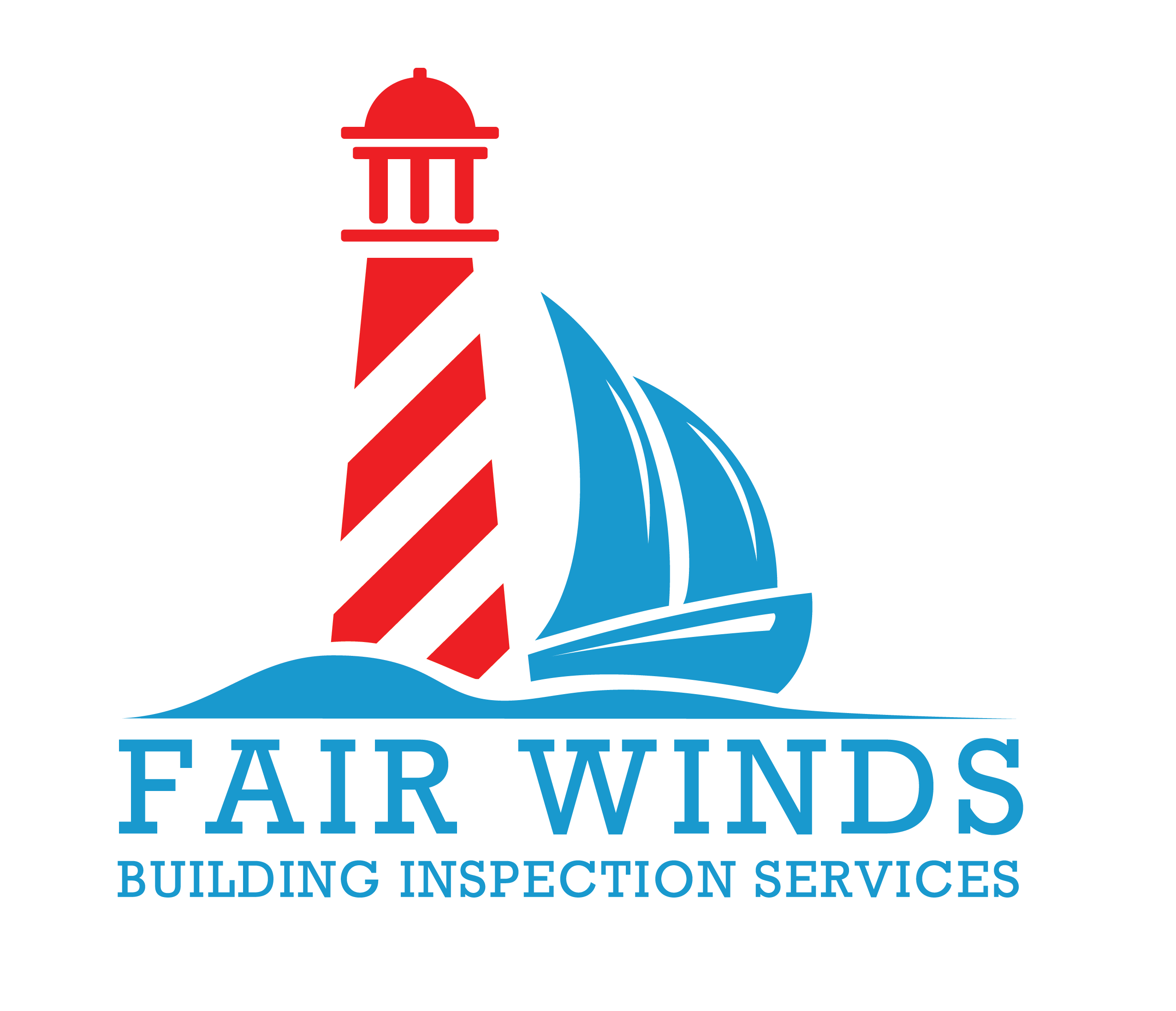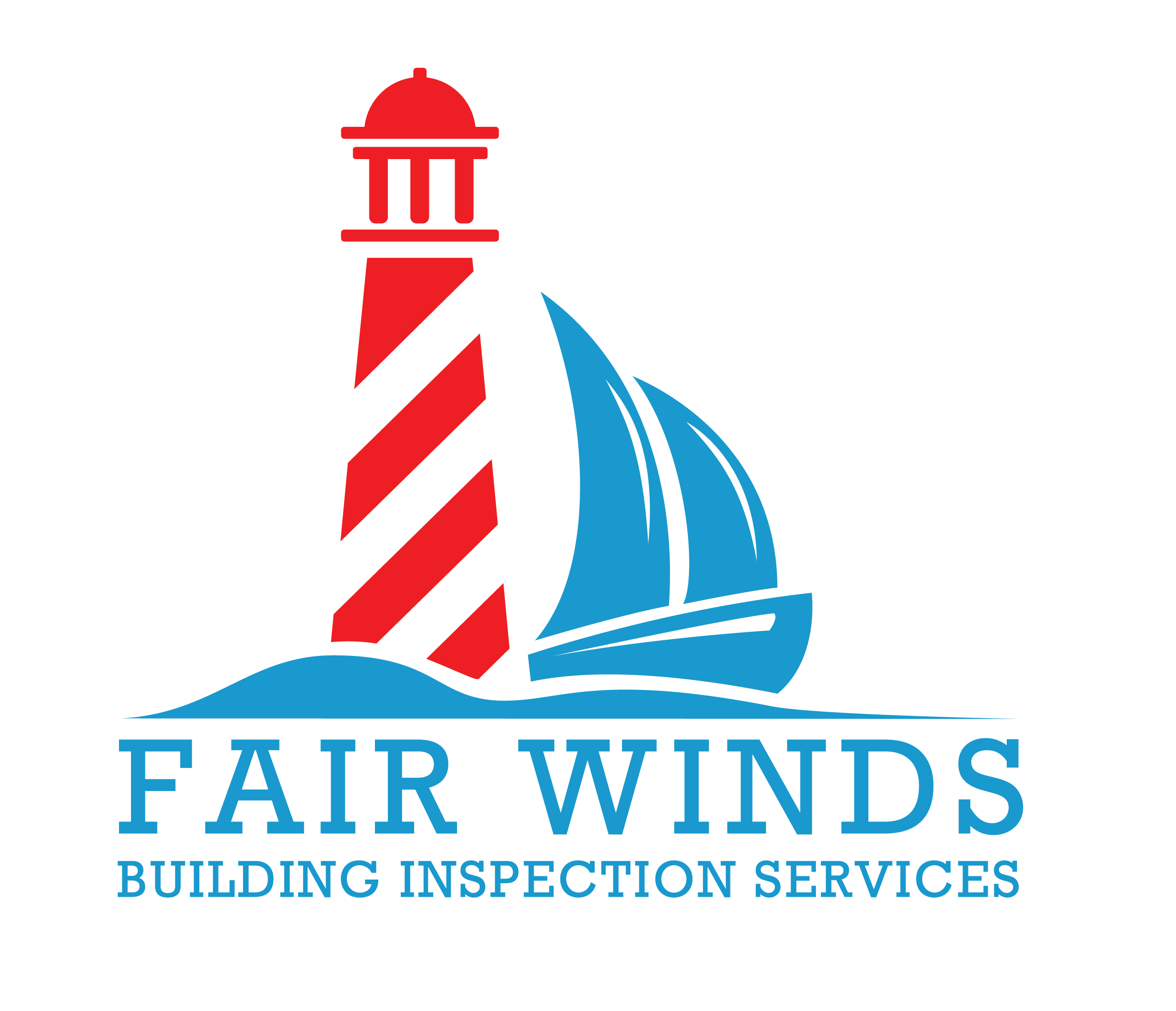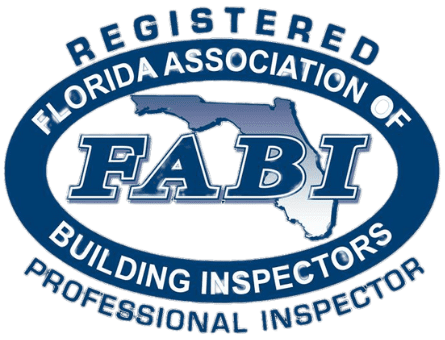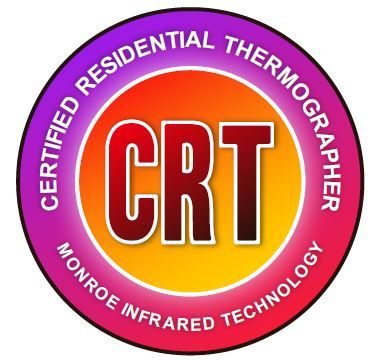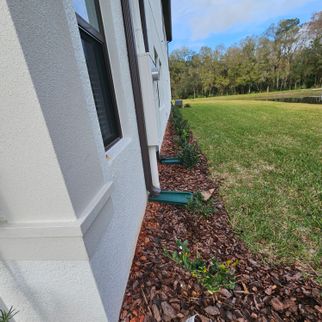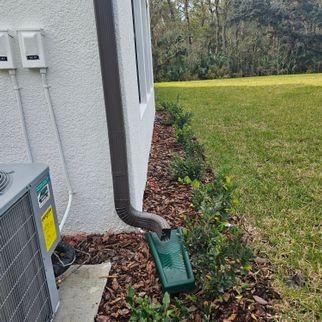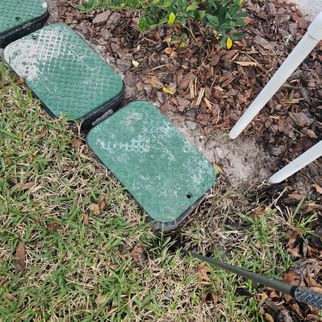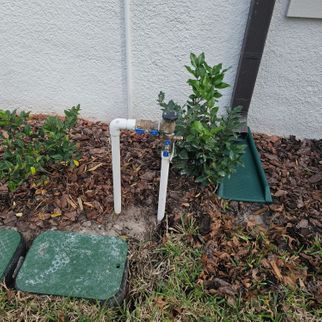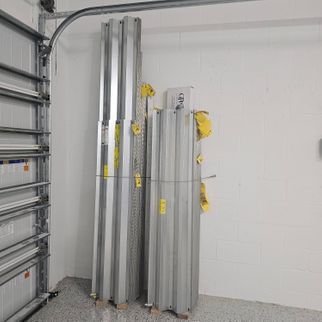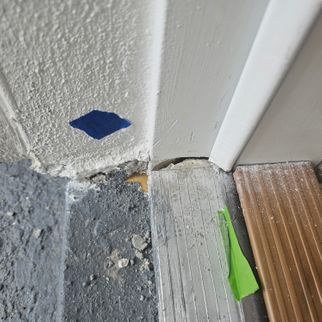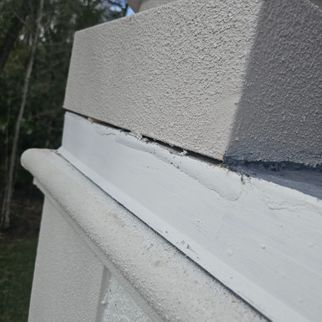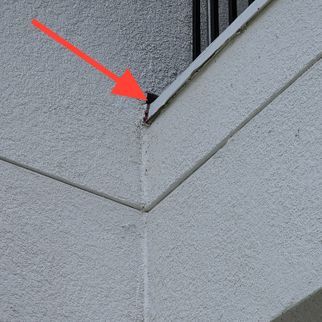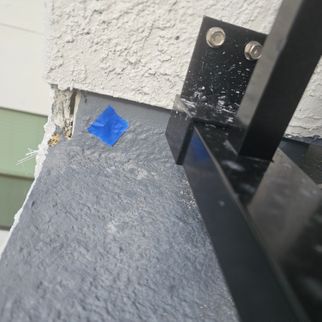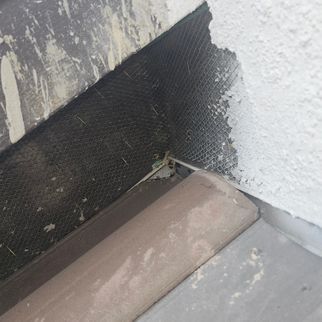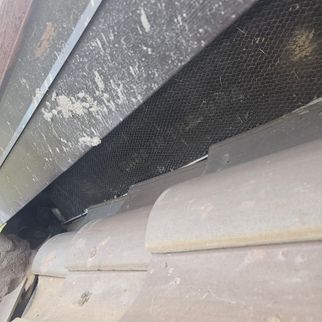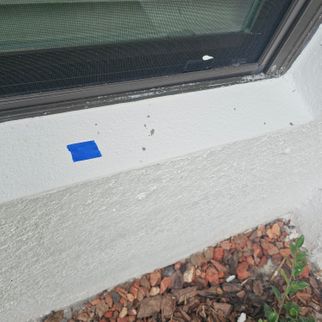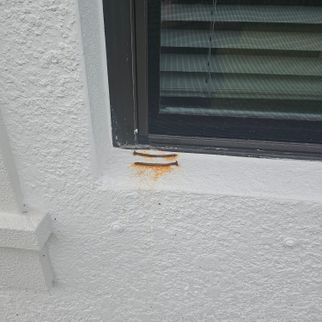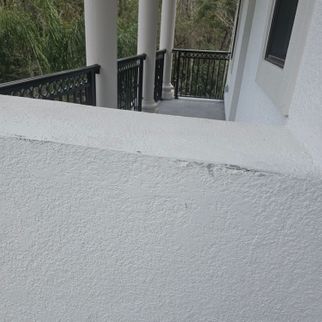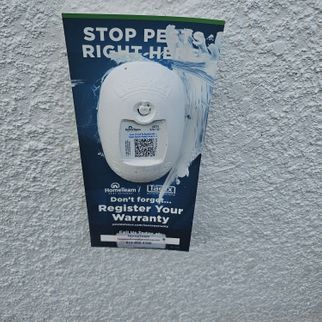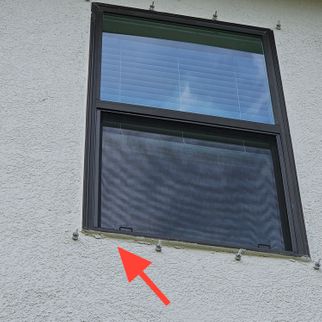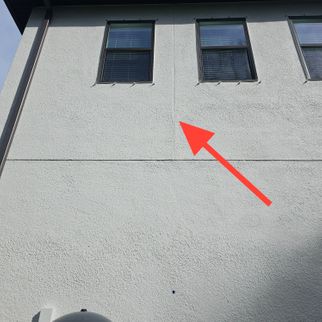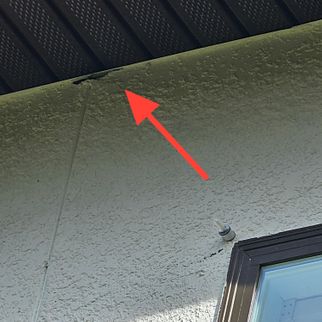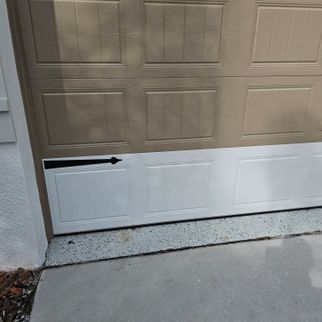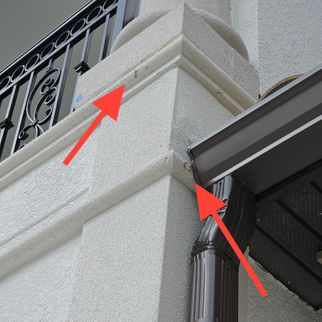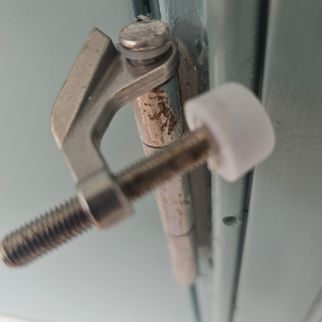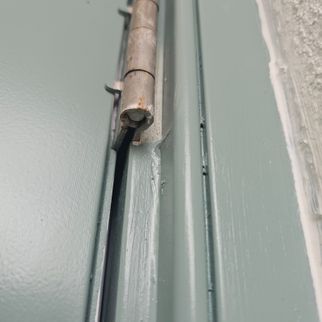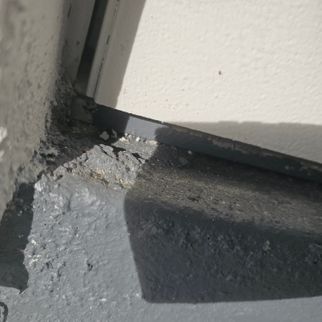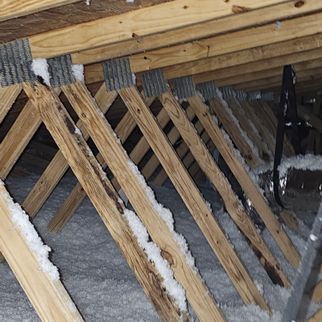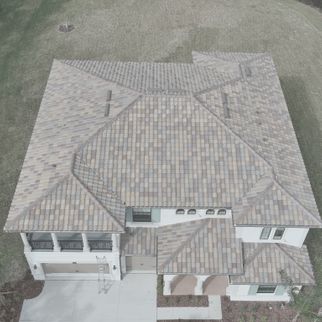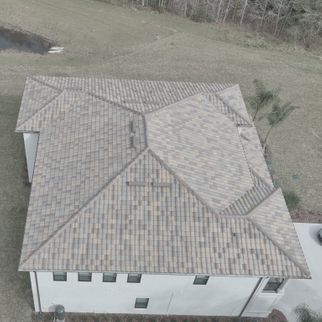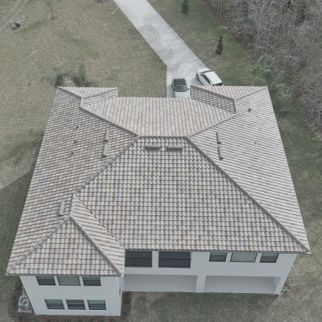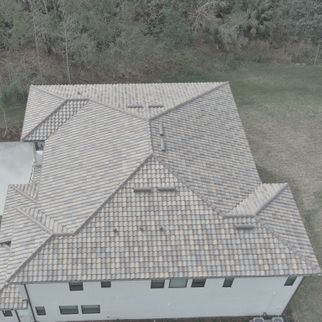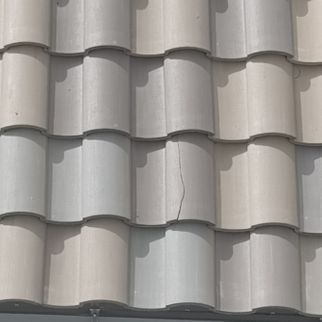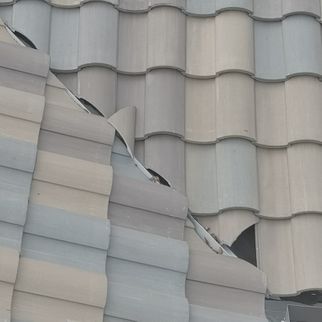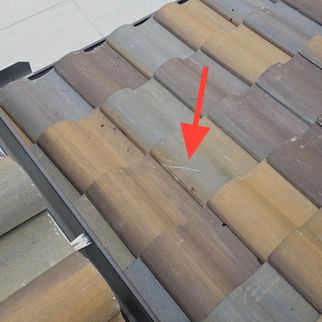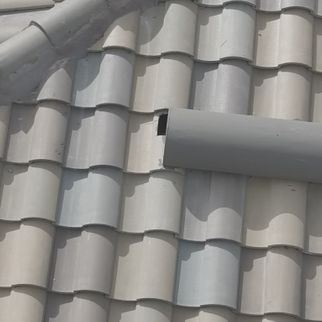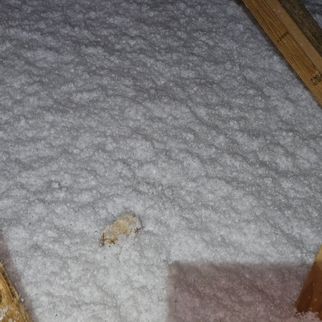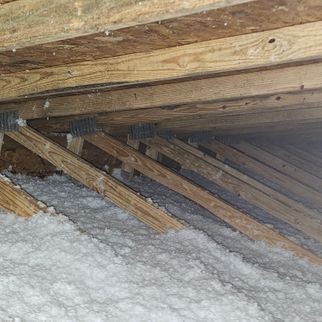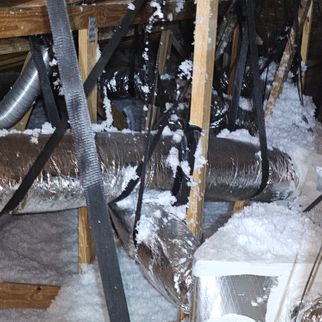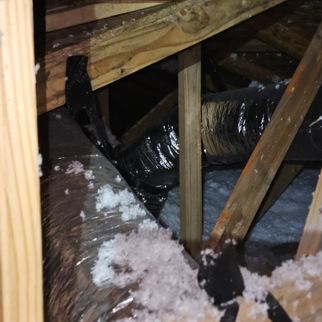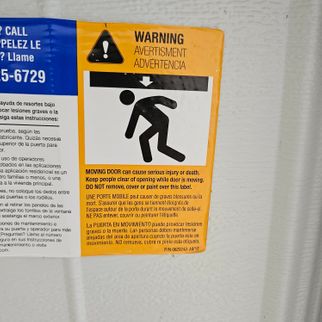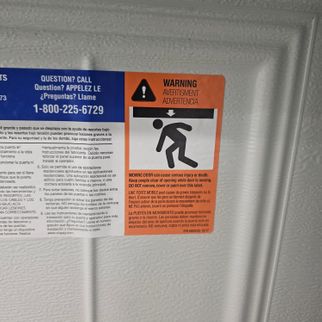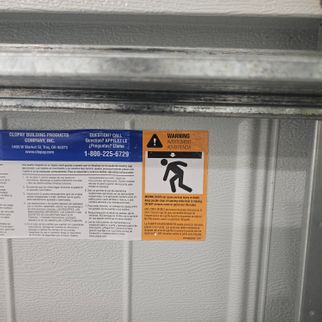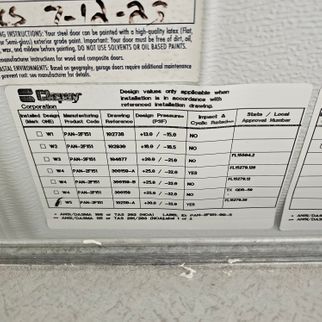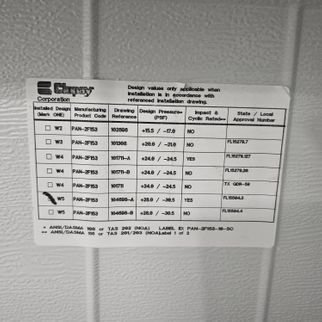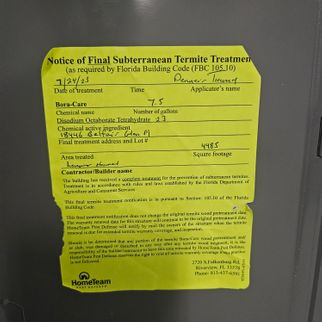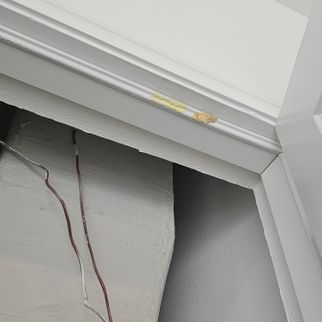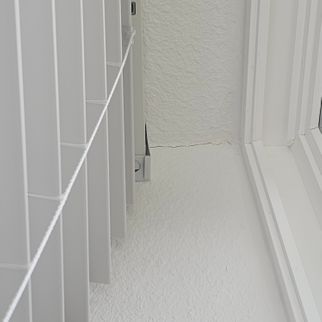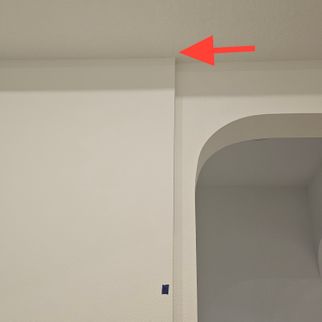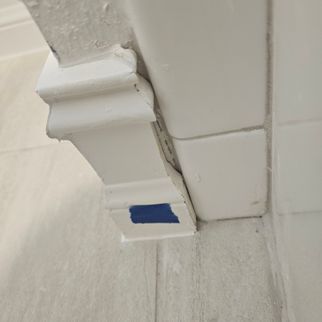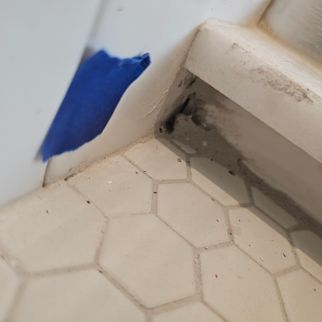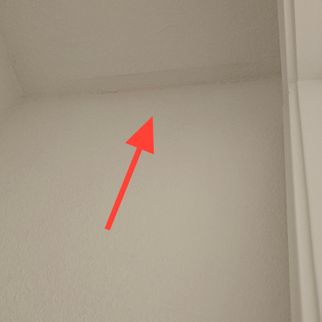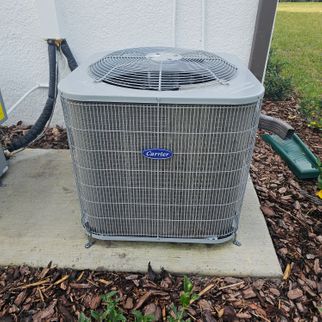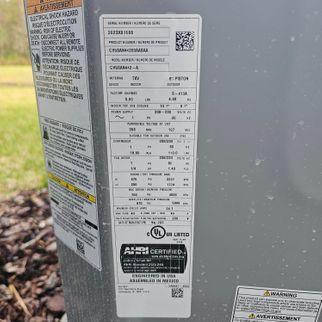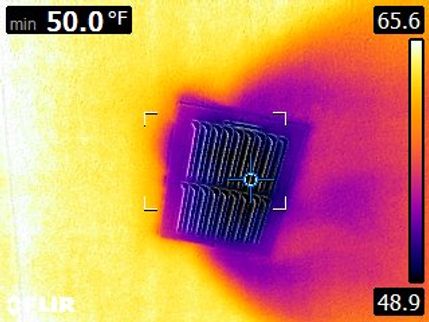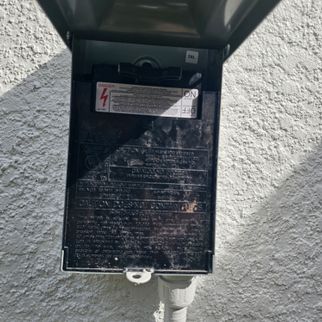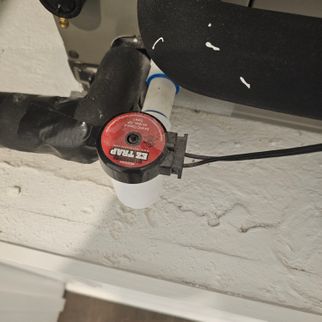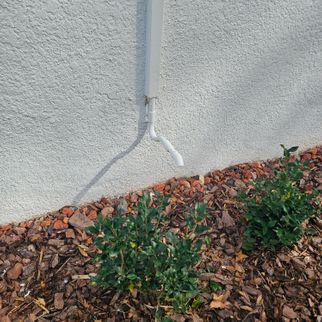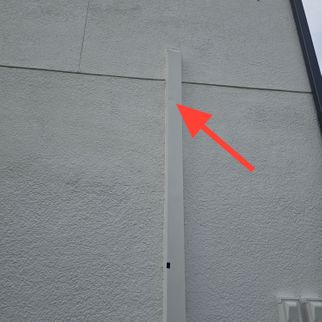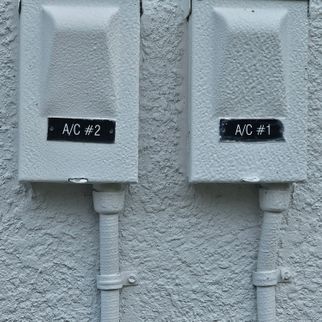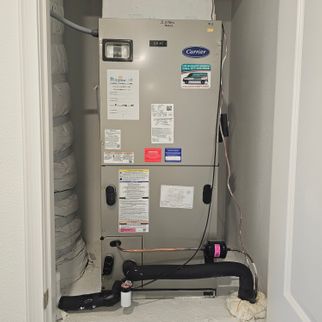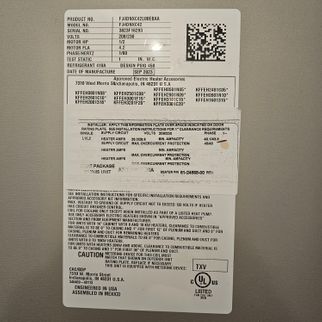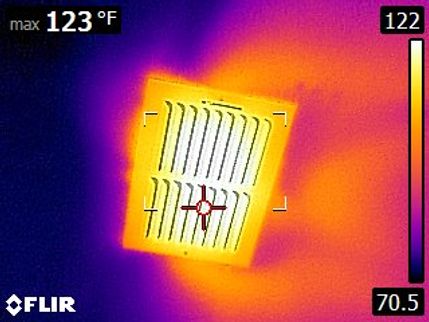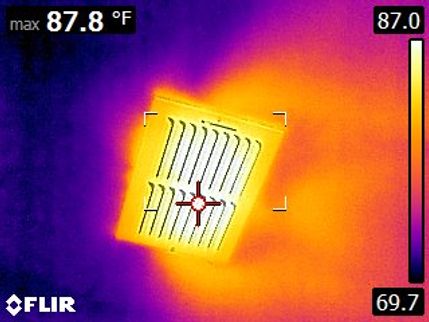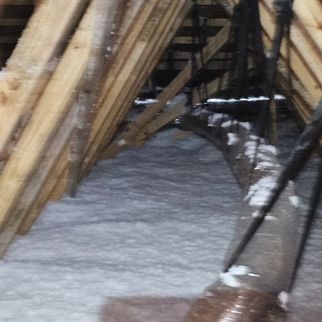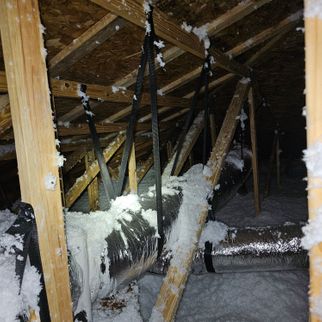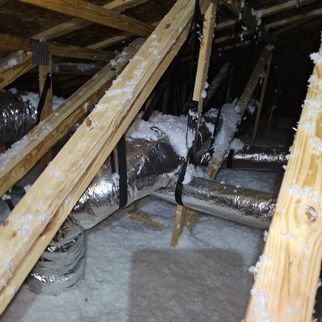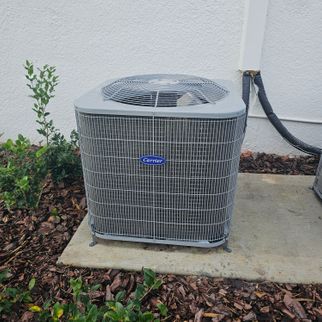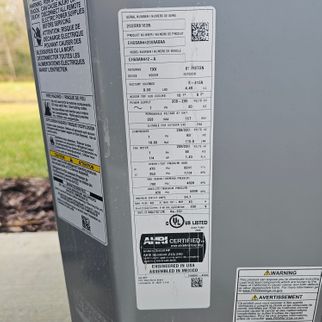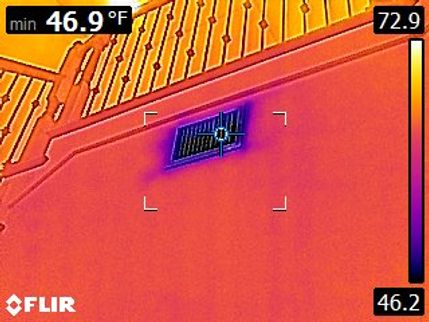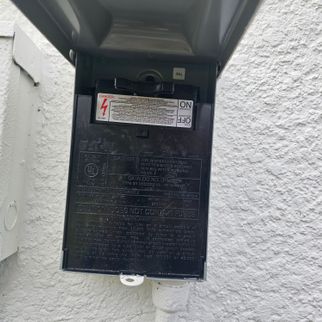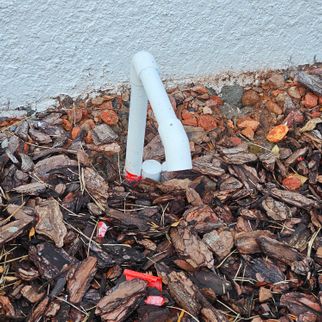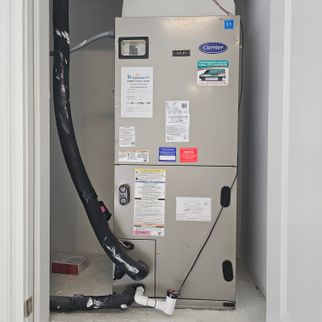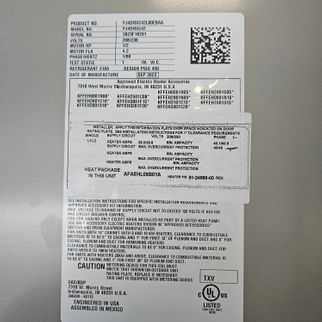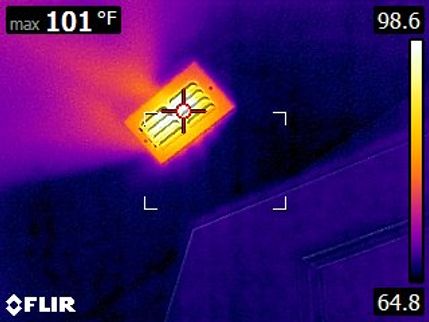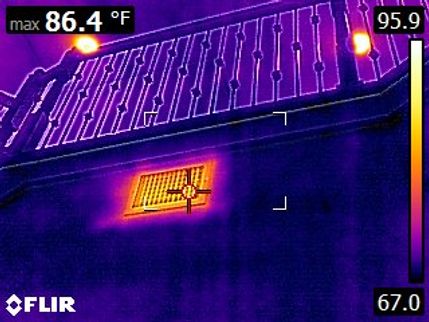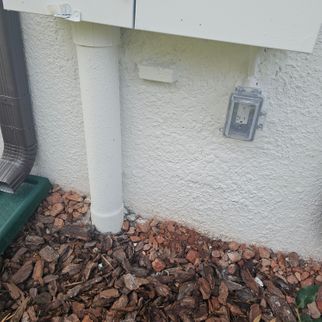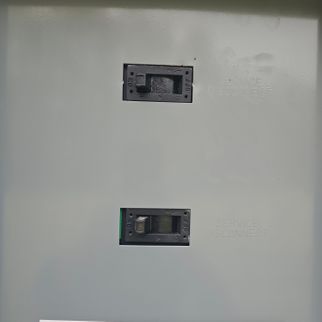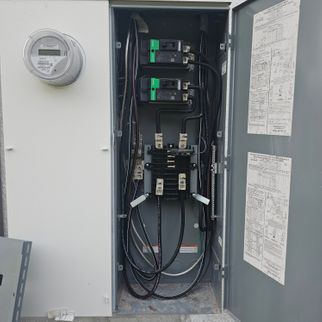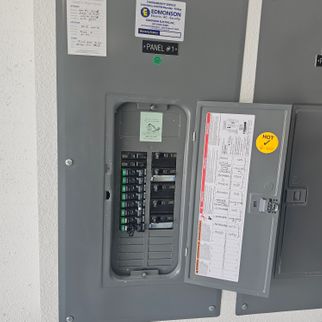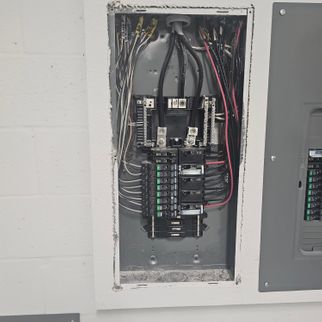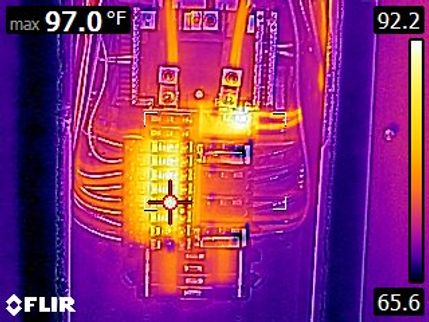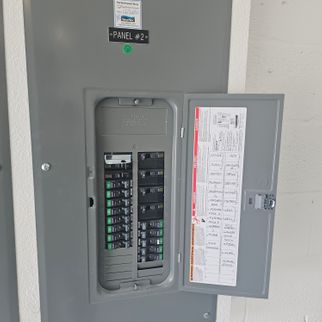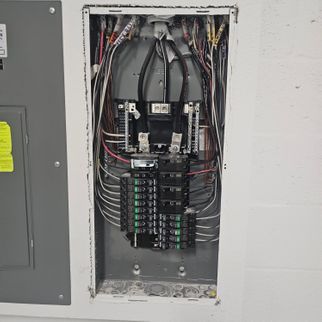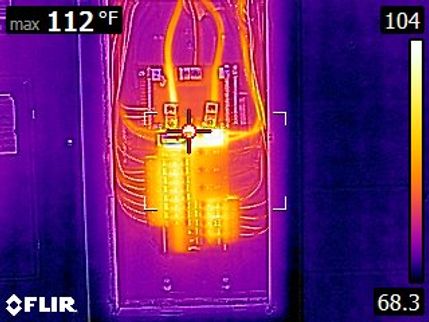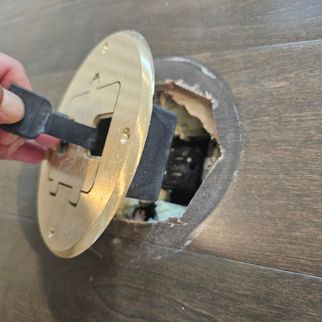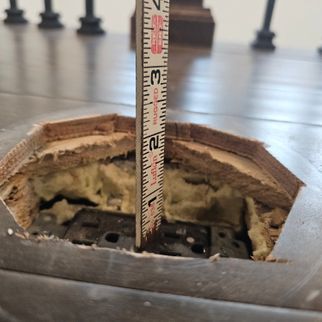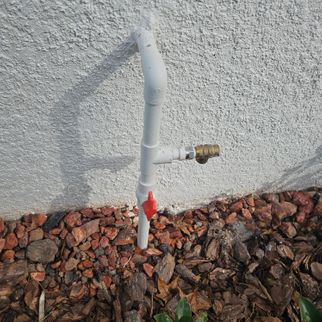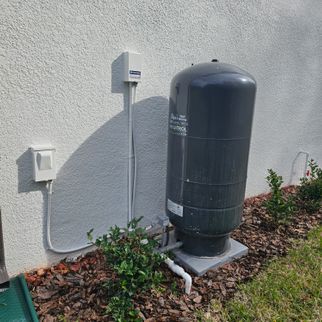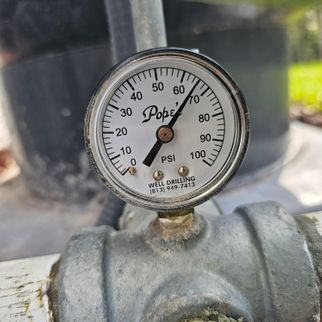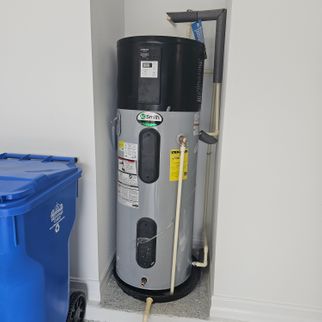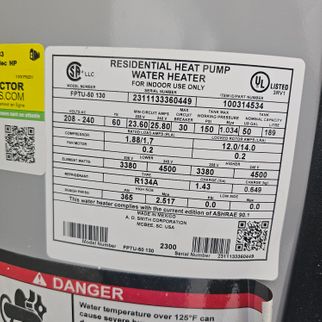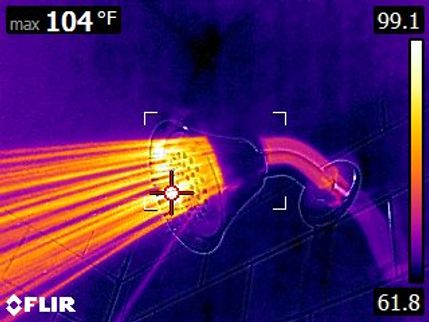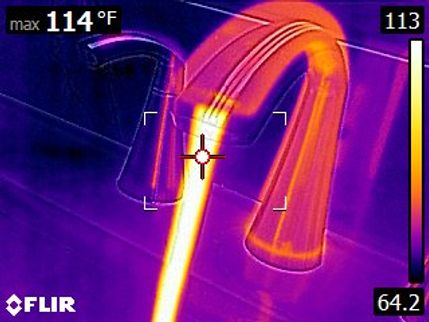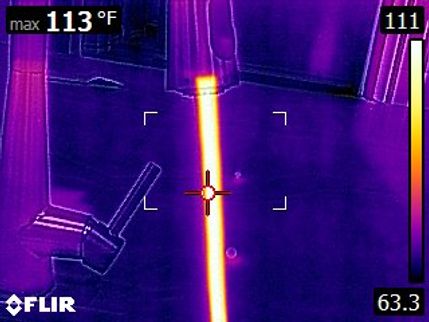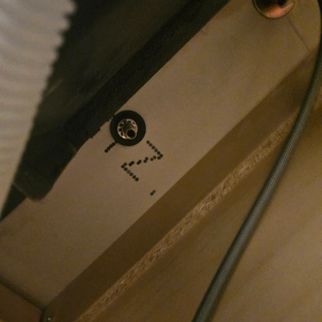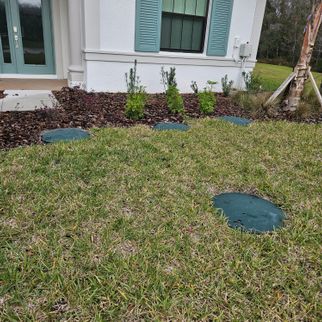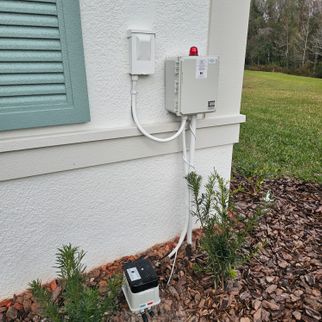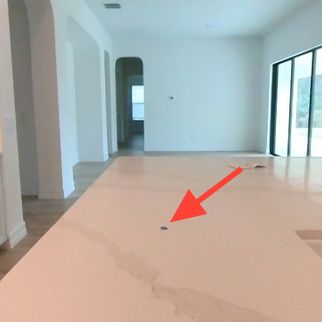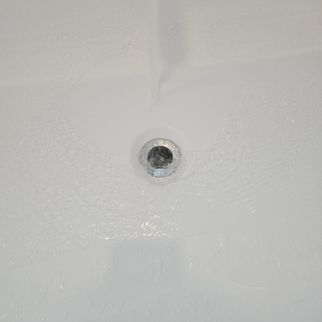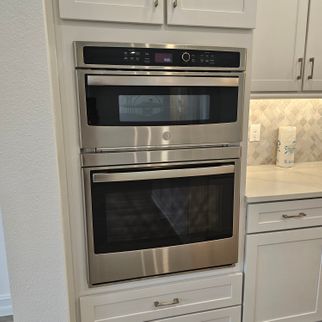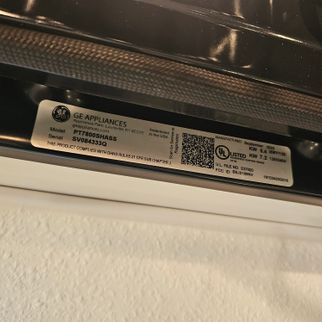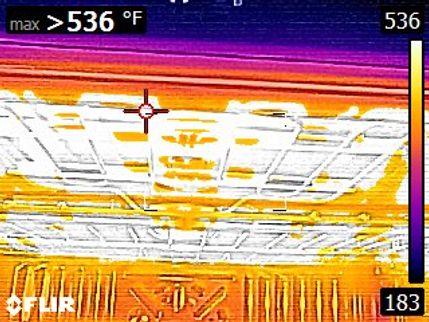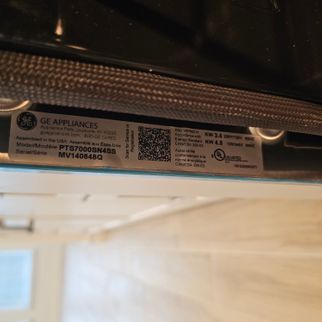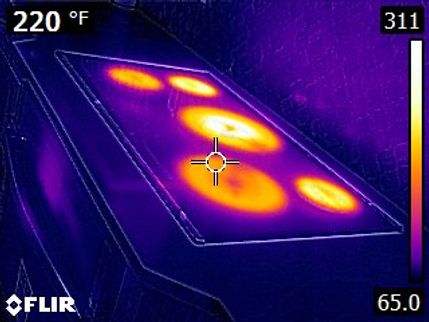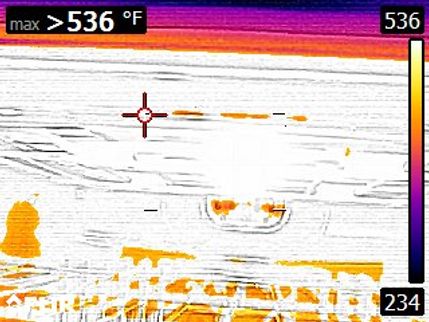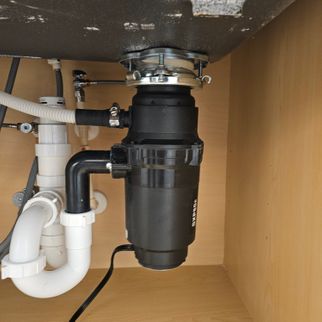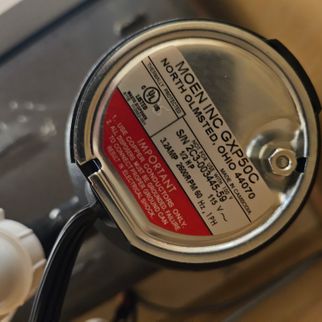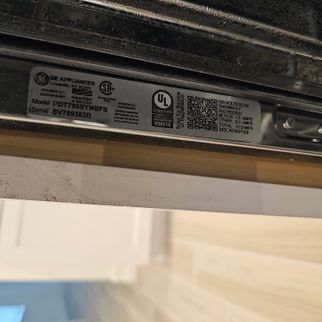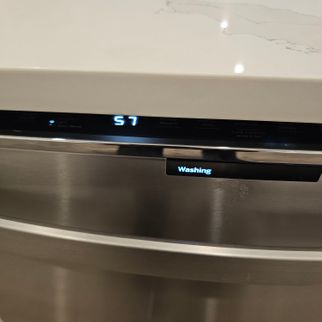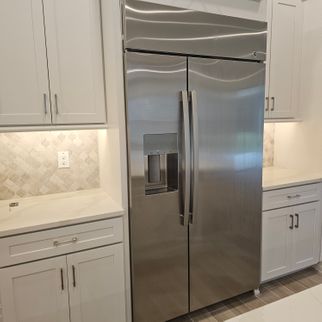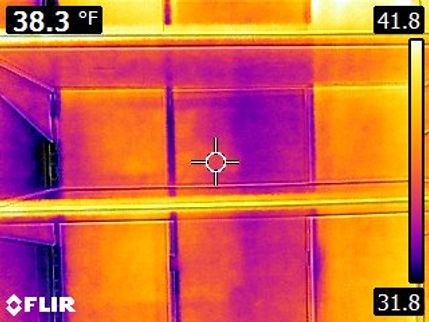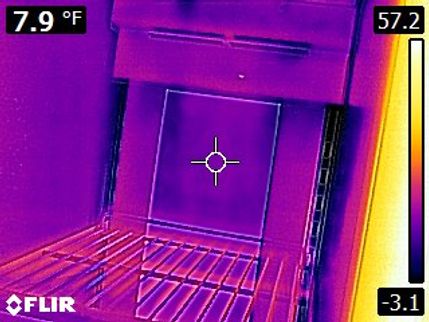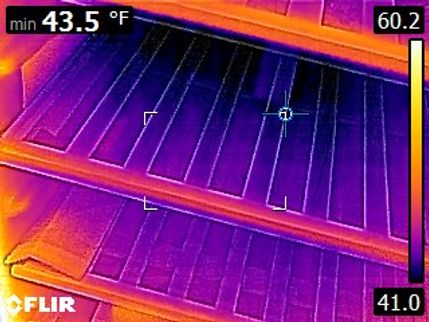Sang Park, License #HI12491, MRSA4846, JE319992
THIS REPORT IS FOR THE EXCLUSIVE USE OF THE CLIENT LISTED ON THIS REPORT. USE BY ANY OTHER PERSONS WITHOUT THE EXPRESS CONSENT OF FAIR WINDS BUILDING INSPECTION SERVICES, LLC. WILL BE A VIOLATION OF A CONTRACTUAL AGREEMENT AND WILL IMMEDIATELY NULLIFY THE REPORT.
The Scope and Purpose
This report outlines the scope and purpose of new construction phase inspection offered by Fair Winds Building Inspection Services. This phase inspection offered by Fair Winds Building Inspection Services is divided into 4 phases; foundation inspection, pre-drywall inspection, pre-closing inspection, and 11-month builder warranty inspection. Your inspection will include only one of these phase inspections. The specific inspections performed for your property are listed in your agreement and detailed in the main part of this report. If you have any questions about which inspections were conducted, please refer to those sections or contact me directly.
Foundation Inspection
A foundation inspection is a crucial step in the early stages of construction, conducted before the concrete slab is poured. This inspection ensures that the site preparation, foundation layout, and structural components comply with the Florida Building Code (FBC) and approved construction plans. The inspector evaluates soil compaction, proper grading, footing placement, and the installation of reinforcement materials such as rebar to confirm structural integrity. Electrical grounding and plumbing pipe positioning are also examined to verify compliance before the slab is poured. Identifying and addressing issues at this stage helps prevent costly foundation failures and structural deficiencies later in the construction process.
Pre-Drywall Inspection
The pre-drywall inspection is conducted to assess compliance with the Florida Building Code (FBC) and approved construction documents, including construction plans, HVAC duct layout, energy performance details, and product approval information. This inspection takes place immediately after framing is completed and before drywall installation begins. It focuses on verifying the proper installation of readily accessible systems and components using normal operating controls and opening readily operable access panels where applicable. The inspection includes, but is not limited to, the evaluation of exterior walls and filled cell locations, window and door installations, roof trusses, deck nailing, floor trusses, interior wall framing, plumbing rough-in, HVAC rough-in, and electrical rough-in. This phase ensures that critical structural, mechanical, and electrical components are properly installed before they are concealed, allowing for necessary corrections and adjustments before the project progresses..
Pre-Closing Inspection
A pre-closing inspection takes place shortly before the final walkthrough of a newly constructed home, ensuring that all systems and components meet Florida Building Code (FBC) standards and the Residential Construction Performance Guidelines published by the National Association of Home Builders (NAHB). This inspection assesses the overall workmanship, functionality of installed systems, and compliance with construction plans. The inspector evaluates the operation of major appliances, electrical outlets, plumbing fixtures, doors, windows, HVAC systems, and safety features such as smoke and carbon monoxide detectors. Finishing details, including flooring, cabinetry, paint, and trim work, are reviewed for quality and proper installation. This inspection provides homeowners the opportunity to document deficiencies that the builder must address before closing, ensuring that the home is delivered in acceptable condition and in accordance with industry performance standards.
11-Month Builder Warranty Inspection
An 11-month builder warranty inspection is conducted near the end of a builder’s one-year warranty period to document any construction defects, system malfunctions, or workmanship issues that have developed since move-in. This inspection follows the Residential Construction Performance Guidelines established by the National Association of Home Builders (NAHB) to assess whether the home meets industry standards. The inspector examines structural components for signs of settlement, foundation cracks, or shifting that may indicate underlying issues. Roofing, siding, and exterior elements are checked for defects, while interior finishes are evaluated for material failures, improper installation, or excessive wear. Mechanical systems, including plumbing, electrical, and HVAC, are tested to ensure proper functionality and efficiency. By identifying issues before the warranty expires, homeowners can request repairs from the builder, avoiding costly out-of-pocket expenses in the future.
This inspection process followed the Florida Department of Business and Professional Regulation Standards of Practice (SOP). The SOP is provided at the end of the report for your reference. There may be comments made in this report that exceed the FL Standards of Practice; these comments (if present) were made as a courtesy to give you as much information as possible about the home. Exceeding the Standards of Practice will only happen when I feel I have the experience, knowledge, or evidence to do so. There should be no expectation that the Standards of Practice will be exceeded throughout the inspection. This inspection and report are not intended to be technically exhaustive. The observations in this report are the opinions of the home inspector. Other inspectors and contractors are likely to have some differing opinions. You are welcome to seek opinions from other professionals.
The descriptions and observations in this report are based on a visual inspection of the property. I inspect the property without dismantling, damaging, or disfiguring and without moving furniture and interior furnishings. This inspection does not cover certain areas that are concealed, hidden, or inaccessible to view. Some systems cannot be tested during this inspection as testing risks damaging the system or the structure. For example, a heat pump is not generally tested if the outside temperature is above 85 degrees Fahrenheit according to most manufacturers' recommendations. The inspection procedures involved non-invasive investigation and non-destructive testing which would limit the scope of the inspection.
How to Read This Report
Getting the Information to You
This report is designed to deliver important and technical information in a way that is easy for anyone to access and understand. If you are in a hurry, you can take a quick look at our "Summary Page” and quickly get critical information for important decision making. However, I strongly recommend that you take the time to read the full Report, which includes digital photographs, captions, diagrams, descriptions, videos and hot links to additional information.
The best way to get the layers of information that are presented in this report is to read your report online (the HTML version), which will allow you to expand your learning about your house. You will notice some words or series of words highlighted in blue and underlined – clicking on these will provide you with a link to additional information. The HTML version of this report also contains streaming videos. Short video clips often contain important information and critical context and sounds that can be difficult to capture in words and still pictures.
For the most reliable viewing experience, I recommend viewing the report on as large a screen as practical, as much detail can be lost on small devices like smart phones. For similar reasons, reports should only be printed in color to retain as much detail as possible and minimize misinterpretation of photographs.
This report can also be printed on paper or to a PDF document.
Chapters and Sections
This report is divided into chapters that parcel the home into logical inspection components. Each chapter is broken into sections that relate to a specific system or component of the home. You can navigate between chapters with the click of a button on the left side margin.
Most sections will contain some descriptive information done in black font. Observation narrative, done in colored boxes, will be included if a system or component is found to be significantly deficient in some way or if we wish to provide helpful additional information about the system or the scope of our inspection. If a system or component of the home was deemed to be in satisfactory or serviceable condition, there may be no narrative observation comments in that section and it may simply say “tested,” or “inspected.”
Observation Labels
All narrative observations are colored, numbered and labeled to help you find, refer to, and understand the severity of the observation. Observation colors and labels used in this report are:
- Due Diligence:thoroughly investigating the property to ensure there are no hidden issues or surprises.
- Description:Detailed description of various aspects of the property noted during the inspection.
- Limitation:Explanation of inspection limitations
- Note:Refers to a side information and/or any comments elaborating on descriptions of systems in the home.
- SOP:State of Florida Department of Business and Professional Regulation Standards of Practice for home inspection
- Homeowner's Responsibility:Your responsibilities as a homeowner
- Builder:Observations that require builder to repair, adjust, or replace.
- Client:Observations that homeowner to make inquiries to builders, install to improve, or repair to function properly
Summary Page
The Summary Page is designed as a bulleted overview of all the observations noted during inspection. This helpful overview is not a substitution for reading the entire inspection report. The entire report must be read to get a complete understanding of this inspection report as the Summary Page does not include photographs or photo captions.
Property Orientation
All locations of the exterior components were given as if you are standing outside and facing the front of the house. The bedrooms and the bathrooms were numbered, going clockwise from the garage entrance door and/or at the top of the stairs when multiple bedrooms/bathrooms existed on the same floor, i.e. bedroom 1, bedroom 2, and master bedroom.
How to Build a Repair Request
To see how to build a custom PDF summary list, built from any number of items in this report, please review this video. The idea behind this feature is to allow the readers of this report to build their own custom lists. These could be used as a tool for inspection responses, or for requesting re-inspection of specific items or for documenting work that has been completed as part of a pre-listing inspection.
No house is perfect. Anything in these categories should be addressed as soon as possible. Often, a serious problem can be corrected inexpensively. Not all deficiencies will be identified during this inspection. This inspection is not a guarantee or warranty of any kind. Unexpected repairs should still be anticipated. All recommended evaluations, repairs, or replacements shall be done by licensed contractors.
Homeownership is both a joyful experience and an important responsibility, so be sure to call on your Fair Winds Building Inspection Services, LLC to help you devise an annual maintenance plan that will keep your family and your investment safe for years to come. Thank you very much for letting us be of service to you and your loved ones.
Summary
Builders
- E1-1 Exterior - Vegetation, Surface Drainage, Retaining Walls & Grading:
Soil erosion was observed in the yard. The builder will correct the deficiency to prevent further erosion and tripping hazard.
- E1-2 Exterior - Wall Covering:
Localized caulking/paint repairs are needed to the exterior of the house. This is commonly recommended maintenance between complete exterior paint jobs to ensure that the more exposed areas continue to perform reliably. Preventative caulking/painting maintenance can help keep these areas weatherproof and prevent wood decay and water damage. The builder will check the exterior of the house for deteriorated or missing sealants around, clean the affected area, and reseal to prevent water intrusion. Checking for deterioration of caulks/sealants annually after the initial repair is the homeowner's responsibility as a part of the annual maintenance. A few examples of the observations noted during the inspection include:
- 2nd floor front balcony door
- 2nd floor front balcony
- 2nd floor rear balcony
- E1-3 Exterior - Wall Covering:
The lath should not be visible nor should the lath protrude through any portion of the stucco surface. The builder will make the necessary corrections.
- E1-4 Exterior - Wall Covering:
Multiple blemish was found on the entire exterior walls when viewed under the normal lighting condition from a distance of 20 feet. The builder will check all exterior walls, repair the defects and touch up paint on repaired areas, matching the existing finish when viewed under normal lighting conditions. A few examples are shown in the photos.
- E1-5 Exterior - Wall Covering:
The color and/or texture of the stucco was not uniform when viewed under normal lighting. The stucco finishes are unique and an exact match of color, texture, or both, may not be practical. The builder will check all exterior walls, repair the texture and/or touch-up paint to match the surrounding area. A few examples are shown in the photos.
- E1-6 Exterior - Flashing and Trim:
The damaged trim was noticed on the exterior walls. The builder will repair the damaged trims and touch up the paint to match the surrounding area.
- E1-7 Exterior - Doors:
The tarnished/corroded exterior door hardware was observed at the time of the inspection. The builder will replace/repair the tarnished hardware.
- E1-8 Exterior - Doors:
The exterior door was sticking or binding. The door should operate smoothly. The builder will adjust or replace the door for it to open and close smoothly.
- E1-9 Exterior - Doors:
Weather-stripping at an exterior door was damaged or deteriorated. The builder will repair/replace the affected weatherstrip.
- E1-10 Exterior - Porches, Patios, Decks and/or Balconies:
The stair handrail was loose and needed re-fastening. The builder will repair or replace the affected parts of the handrail to ensure the handrail is firmly secured to the structure.
- R-1 Roof - Roof Covering:
Damaged tiles were visible throughout the roof at the time of the inspection. A few examples are shown in the photos. The builder will check the entire roof and replace the damaged tiles.
- R-2 Roof - Roof Covering:
Although the concrete roofing tiles are not waterproofing material, the gaps around the roof penetrations and the head flashing were too wide that debris or small branches may enter the space and damage the underlayment, which is the actual protection from rainwater. The builder will check entire roof and apply enough mortar in the affected area to protect the underlayment. A few examples are shown in the photos.
- Both sides of off-ridge vent at multiple locations
- Head flashing on the front right side of the lower roof
- I-1 Interiors - Floors, Walls, and Ceilings:
Blemishes on the floors/walls/ceilings when viewed from 6 feet away under normal lighting. The builder will check all interior walls and ceilings, repair the defects and touch up paint on repaired areas, matching the existing finish when viewed under normal lighting conditions. A few examples of blemishes noted during the inspection include:
- I-2 Interiors - Floors, Walls, and Ceilings:
Deteriorated and Missing sealant was noticed at multiple locations during the inspection. The builder will check the entire interior of the house for deteriorated/missing sealants, cleaning, and resealing. A few examples are shown in the photos. Checking for deterioration of sealants annually after the initial repair is recommended as a part of the annual maintenance.
- I-3 Interiors - Floors, Walls, and Ceilings:
Damage to the wall was present in the master bedroom closet. Builder will repair the damaged wall and/or ceiling.
- I-4 Interiors - Floors, Walls, and Ceilings:
Water stains were noted on the walls. These stains were tested with a moisture meter during inspection and tested dry at the time of inspection. Many water leaks are intermittent or related to specific weather conditions or occupant behavior; it is impossible for me to distinguish these conditions during a one-time inspection or to know if repairs could be needed to prevent future leaks. Builder will further investigate to determine the cause of the stain, repair as required, and touch up paint to match the surrounding area.
- I-5 Interiors - Doors:
The interior door was not latching correctly. The builder will adjust the door latch for proper operations.
- I-6 Interiors - Doors:
A door did not stay open or closed. The builder will adjust/repair/replace the door for proper operation.
- HS1-1 HVAC System 1 - Cooling:
The metal cover for the AC supply and return line was damaged. The builder will repair/replace the damaged cover.
- HS1-2 HVAC System 1 - Cooling:
The number tag on the AC condenser disconnects were switched. The AC condenser #1 and the air handler #2 were one system and provided conditioned air to the second floor. The builder will remove the existing tag and renumber the A/C condensers to be consistent with the air handler numbering system.
- HS2-1 HVAC System 2 - Cooling:
Damaged fins were noted on the outdoor heat pump compressor unit. This can impact the energy efficiency and service life of this heat pump. The builder will repair/replace the unit.
- E-1 Electrical - Switches, Fixtures & Receptacles:
The loose electric receptacle should be secured to prevent accidental damage to the wiring connections. Additionally the receptacle was installed too far below the floor, rendering obsolete. The builder will correct the deficiency.
- KB-1 Kitchen & Bathroom - Countertops & Cabinets:
The cabinet door/drawer was obstructed by a window stool. The builder will correct the deficiency.
- KB-2 Kitchen & Bathroom - Countertops & Cabinets:
The countertop was damaged at the time of inspection. The builder will repair or replace the countertop.
- KB-3 Kitchen & Bathroom - Fixtures And Faucets:
The drain stopper was missing. The builder will install a stopper at the affected plumbing fixture.
- KB-4 Kitchen & Bathroom - Refrigerator:
The refrigerator water dispenser did not produce water when the lever was pressed during the inspection, despite the water supply tubing being connected. The builder will further evaluate and correct the deficiency.
Pre-Closing Inspection
Exterior
Vegetation, Surface Drainage, Retaining Walls & Grading
Irrigation System
Walkways & Driveways
Wall Covering
Flashing and Trim
Eaves, Soffits and Fascia
Doors
Porches, Patios, Decks and/or Balconies
Garage
General
Garage Floor
Ceiling, Walls & Firewalls in Garage
Garage Vehicle Door
Garage Vehicle Door Opener
Interiors
General
Floors, Walls, and Ceilings
Doors
Windows
Smoke and Carbon Monoxide Detectors
Steps/Stairs
Electrical
General
Service Drop or Service Entrance Cable
Electric Meter & Base
Service Grounding & Bonding
Main Service Disconnect and Main Panel
Subpanel
Electrical Wiring
Switches, Fixtures & Receptacles
Ground Fault Circuit Interrupters (GFCI)
Arc Fault Circuit Interrupters (AFCI)
Plumbing
General
Water Supply System
Water Distribution Systems
Drain, Waste, & Vent Systems
Water Heater
Water Filtration System
Septic System
Building Info, Limitations, and Exclusions
General
Type of Building : Single Family (2-story)
Attending the Inspection: Buyer, Buyer's Agent
All components and conditions which by the nature of their location are concealed, camouflaged, or difficult to inspect are excluded from the report. The report does not address
- concealed conditions, latent defects, consequential damages, and
- cosmetic imperfections that do not significantly affect a component’s performance of its intended function.
- the remaining life expectancy of systems and components.
- the causes of conditions and deficiencies.
- future conditions including but not limited to failure of systems and components.
- compliance of systems and components with past and present requirements and guidelines (codes, regulations, laws, ordinances, specifications, installation and maintenance instructions, use and care guides, etc.).
- the presence of environmental hazards including, but not limited to, allergens, toxins, carcinogens, electromagnetic radiation, noise, radioactive substances, and contaminants in building materials, soil, water, and air.
- whether items, materials, conditions, and components are subject to recall, controversy, litigation, product liability, and other adverse claims and conditions.
- the market value of the property and its marketability.
- the advisability of purchasing the property.
New construction presents a more difficult inspection challenge due to the lack of any history of the structure. The metric of how the building has performed over time is taken away from the inspector during a new construction inspection. Items such as foundation settling, materials aging and other conditions that would be evident due to the natural aging and usage of the building have not yet become evident. Often there will be adjustments and minor repairs at most new structures over the first few years of occupation that will become evident only during usage and should be expected with any new structure.
For new houses, I would recommend that they receive substantial ventilation, which could consist of activation of the whole house fan system for longer than normal periods of time during the initial occupation, as well as opening windows and allowing for cross ventilation to occur in a more significant manner than what might be usually considered adequate. Even though new materials are becoming more eco-friendly, new structures have a significant amount of toxins that off-gas from newer engineered materials, such as the chemicals used for carpet construction, particleboard adhesion, and different types of resins and chemicals used in different paint and construction materials. More ventilation will help clear the initial period of off-gassing rather than letting this remain in the structure to build up at the interior.
I recommend for new construction that the new owner gain copies of either "as built" or original building plans so that future changes, repairs, or references can be made to this information. At least, the county/city building department should have a copy of the construction drawings. You can request a copy from them. Warranties for all the appliances and interior systems equipment should also be saved.
For new structures, accumulating some spare materials such as floor tile, specialty trims or tile work, engineered flooring, and other materials, to use for minor repairs and replacements in the future, is recommended. Generally, as the years go by, model numbers and glazing types for the materials change and it is sometimes difficult to get matching materials. Keeping a small stockpile on hand can be helpful in repairing the structure in the future.
Mold testing and mold inspection are not included in the scope of this standard home inspection. If you have concerns about mold, I am a licensed mold assessor and can collect samples and conduct mold testing for an additional fee. It is important to note that localized mold issues are often manageable by addressing and sealing the affected area that has experienced water intrusion. The most effective way to prevent and control mold growth is to diagnose and repair water problems promptly. Chronic or widespread water issues can lead to more complex and costly mold remediation, whereas localized water problems typically result in simpler and more contained mold repairs. For further evaluation or testing, please feel free to inquire about additional services.
Complimentary Services
Thermal Imaging
As human beings, we are limited to seeing light only in the visible spectrum called white light. This is the light that bounces off everyday objects whether that light is being emitted by our Sun or an artificial source such as a light bulb.
Without assistance from technology, we are unable to see surface temperature variances, and it is the ability to see these variances that allow us to more accurately identify potential, and immediate, problems in your home that would have otherwise been missed. The unique aspect of seeing surface temperature variances is that such variances can be caused by issues that may lie below the surface of a floor, behind a wall, or above a ceiling - places that are "out of sight" and are thus out of mind. Also, surface temperature variances can be caused by airflows such as warm air seeping under a door or cold air leaking from central air ducts. The air itself changes the surface temperature of objects that come in contact with the air. Surface temperatures can also be changed by living organisms such as mold, mildew, and household pests. Because these organisms often thrive in places that cannot be seen by the naked eye (such as behind walls), the use of infrared thermography allows us to pinpoint exactly where a problem area is in your home without the need for any immediate invasive damage to the structure of your home.
Finally, thermal imaging technology allows us to more accurately identify damage to your home's electrical systems. By being able to pinpoint "hot spots" in the electrical panel and household wiring, we can provide you and your electrician with detailed imagery that will help the electrician identify defects and make repairs more quickly to save you money. In short, infrared thermography is purposefully designed to provide you with a level of service that increases the speed by which many household problems can be identified, reduces the collateral damage required to fix those problems, increases the accuracy rate of correctly identifying problems, and helps you to catch small problems sooner so that don't become expensive or unmanageable problems that can affect your family's health or your financial wellbeing.
Temperature readings displayed on thermal images in this report are included as a courtesy and should not be wholly relied upon as a home inspection is qualitative, not quantitative. These values can vary +/- 2% or more of displayed readings.
$25,000 Honor Guarantee
InterNACHI® will pay up to $25,000 (USD; maximum collective aggregate) for the cost of replacement of personal property lost (and not recovered, restituted, or insured) during an inspection and stolen by an InterNACHI®-certified member who was convicted of or pleaded guilty (or no contest) to any criminal charge resulting from the member's taking of the client's personal property. Claimant agrees that the exclusive venue for any action against InterNACHI® arising out of this Honor Guarantee is the District Court in Boulder County, Colorado. InterNACHI's Honor Guarantee is valid throughout the U.S. and Canada. For details, click the logo below.
Exterior
Vegetation, Surface Drainage, Retaining Walls & Grading
Inspection Status: Inspected
The landscaping was recently installed on a site that was disturbed for construction. This process often involves removing existing shrubbery, trees, and undergrowth, which significantly disrupts soil percolation. Newly landscaped areas take years to develop the root structures needed to break up the soil and improve drainage. During this period, water may accumulate in various areas, sometimes necessitating additional ground drainage if the buildup is significant. This is a common occurrence and should be considered a normal part of the site’s natural development.
During the inspection, conditions conducive to pest infestation were observed around the site. To control pest infestation organically, it is crucial to remove cellulose and wood debris from the property, creating a buffer between the house and the natural environment. I recommend addressing these conditions to reduce structural risks. During inspection I noted:
🛠
- Mulches were touching the exterior walls - remove them 1 to 2 feet away from the exterior walls
Soil erosion was observed in the yard. The builder will correct the deficiency to prevent further erosion and tripping hazard.
Irrigation System
Inspection Status: Inspected
Front Yard: Zone 2, Zone 5, Zone 6, Zone 9
Left Yard: Zone 4
Right Yard: Zone 8
Backyard: Zone 3, Zone 7, Zone 10, Zone 11, Zone 12
Garden: Zone 1
This home was equipped with an irrigation system which was inspected as a courtesy. The system was examined for general operation and function. I cannot determine if the coverage was complete or proper for your landscaping. I checked if the irrigation control box was operational, checked if there were obvious broken/inefficient sprinkler heads, and recommended routine maintenance if needed. It is common and easy for sprinklers to be damaged even after an inspection. If desired, a licensed lawn irrigation contractor can be retained to perform a detailed evaluation and to make any repairs necessary.
Walkways & Driveways
Inspection Status: Inspected
Walkway Material: Concrete
Driveway Material: Concrete
Wall Covering
Inspection Status: Inspected
🏠: Homeowner's Responsibility, Hurricane Panels
Material: Stucco
The exterior of your home is slowly deteriorating and aging. The sun, wind, rain, and temperatures are constantly affecting it. Every wall penetration is a place for potential water intrusion, causing damages that are not visible until it becomes a major issue. The major issues often can be avoided with regular maintenance, saving thousands of dollars. Your job is to monitor the exterior of the building for its condition and weather tightness. Check the condition of all exterior materials and look for developing patterns of damage or deterioration.
During a heavy rainstorm (without lightning), grab an umbrella and go outside. Walk around your house and look around at the roof and property. A rainstorm is a perfect time to see how the roof, downspouts, and grading are performing. Observe the drainage patterns of your entire property, as well as the property of your neighbor. The ground around your house should slope away from all sides. Downspouts, surface gutters, and drains should be directing water away from the foundation.
Localized caulking/paint repairs are needed to the exterior of the house. This is commonly recommended maintenance between complete exterior paint jobs to ensure that the more exposed areas continue to perform reliably. Preventative caulking/painting maintenance can help keep these areas weatherproof and prevent wood decay and water damage. The builder will check the exterior of the house for deteriorated or missing sealants around, clean the affected area, and reseal to prevent water intrusion. Checking for deterioration of caulks/sealants annually after the initial repair is the homeowner's responsibility as a part of the annual maintenance. A few examples of the observations noted during the inspection include:
- 2nd floor front balcony door
- 2nd floor front balcony
- 2nd floor rear balcony
The lath should not be visible nor should the lath protrude through any portion of the stucco surface. The builder will make the necessary corrections.
Multiple blemish was found on the entire exterior walls when viewed under the normal lighting condition from a distance of 20 feet. The builder will check all exterior walls, repair the defects and touch up paint on repaired areas, matching the existing finish when viewed under normal lighting conditions. A few examples are shown in the photos.
The color and/or texture of the stucco was not uniform when viewed under normal lighting. The stucco finishes are unique and an exact match of color, texture, or both, may not be practical. The builder will check all exterior walls, repair the texture and/or touch-up paint to match the surrounding area. A few examples are shown in the photos.
Flashing and Trim
Inspection Status: Inspected
The damaged trim was noticed on the exterior walls. The builder will repair the damaged trims and touch up the paint to match the surrounding area.
Eaves, Soffits and Fascia
Inspection Status: Inspected
Doors
Inspection Status: Inspected
The tarnished/corroded exterior door hardware was observed at the time of the inspection. The builder will replace/repair the tarnished hardware.
The exterior door was sticking or binding. The door should operate smoothly. The builder will adjust or replace the door for it to open and close smoothly.
Weather-stripping at an exterior door was damaged or deteriorated. The builder will repair/replace the affected weatherstrip.
Porches, Patios, Decks and/or Balconies
Inspection Status: Inspected
Material: Concrete
The stair handrail was loose and needed re-fastening. The builder will repair or replace the affected parts of the handrail to ensure the handrail is firmly secured to the structure.
Roof
General
Roof Type/Style: Hip
Inspection Method: By a drone, Walking on the roof surface
Your job as the homeowner is to monitor the roof covering because any roof can leak. To monitor a roof that is inaccessible or that cannot be walked on safely, use binoculars. Look for deteriorating or loosening of flashing, signs of damage to the roof covering and debris that can clog valleys and gutters.
Roofs are designed to be water-resistant. Roofs are not designed to be waterproof. Eventually, the roof system will leak. No one can predict when, where or how a roof will leak. Every roof should be inspected every year as part of a homeowner's routine home maintenance plan. Catch problems before they become major defects.
The evaluation of the upper roof was conducted using a drone. While this method was not as thorough as a walking-on-the-roof-surface inspection, it was the best and safest option given the limited access. Any comments in this report related to the roof covering, roof penetrations, gutters, chimneys, etc., were based on the visible perspective captured by the drone's camera. All relevant photos will be included in this report.
This was a visual inspection of the roof-covering materials. It does not include an inspection of the entire system. There are components of the roof that are not visible or accessible at all, including the underlayment, decking, fastening, flashing, age, shingle quality, manufacturer installation recommendations, building code, etc.
It is virtually impossible to detect a leak except as it is occurring or by specific water tests, which are beyond the scope of our inspection. I recommend that you ask the sellers to disclose information about the roof and that you include comprehensive roof coverage in your home insurance policy.
This inspection is not a guarantee that a roof leak in the future will not happen. Roofs leak. Even a roof that appears to be in good, functional condition will leak under certain circumstances. Fair Winds Building Inspection Services will not take responsibility for a roof leak that happens in the future. This is not a warranty or guarantee of the roof system. Contact the Inspector immediately if any adverse conditions are observed that were not commented on in your inspection report.
Roof Structure
Inspection Status: Inspected
The inspection of the roof structure in the attic was limited due to restricted access and obstructed views. Insulation and ducts blocked the view of wood members and made it unsafe to traverse the attic floor. Very low pitched near the edges of the roof. A visual inspection was performed from point of access.
Roof Covering
Inspection Status: Inspected
Material: Concrete Tiles
The roof covering material on this home was concrete tiles and was installed in 1990. According to the Florida Association of Building Inspectors, the life expectancy of this type of roof covering is 25 to 30 years in central Florida. Tile roof installations are difficult to inspect visually; there are many critical elements that cannot be viewed without removing some tiles. I recommend regular inspection and maintenance to prolong the life of the roof covering material and detect any predisposing factors that may lead to water leaks.
Although the concrete roofing tiles are not waterproofing material, the gaps around the roof penetrations and the head flashing were too wide that debris or small branches may enter the space and damage the underlayment, which is the actual protection from rainwater. The builder will check entire roof and apply enough mortar in the affected area to protect the underlayment. A few examples are shown in the photos.
- Both sides of off-ridge vent at multiple locations
- Head flashing on the front right side of the lower roof
Roof Penetrations
Inspection Status: Inspected
I was unable to closely inspect all vent pipes that penetrate the roof-covering materials due to access limitations. This restriction prevented a full evaluation of their condition.
Flashings
Inspection Status: Inspected
I attempted to inspect the flashing related to the vent pipes, wall intersections, eaves and gables, and the roof-covering materials. In general, there should be flashing installed in certain areas where the roof covering meets something else, like a vent pipe or siding. Most flashing is not observable, because the flashing material itself is covered and hidden by the roof covering or other materials. So, it's impossible to see everything. A home inspection is a limited visual-only inspection.
Roof Drainage System
Inspection Status: Inspected
🏠: Homeowner's Responsibility
Your job is to monitor the gutters and be sure that they function during and after a rain. Look for loose parts, sagging gutter ends, and water leaks. The rainwater should be diverted far away from the house foundation.
Attic
General
Location Of Access: Master Bedroom Closet
Method Of Evaluation: From Attic Interior
Type of Attic Ventilation: Off-ridge Vent, Soffit Vent
Average Depth of Attic Insulation: 9-12 inches
Attic Insulation R-Value: 30
The attic inspection was limited due to restricted access and obstructed view. Insulation and ductwork blocked the view of structural components, and traversing the attic floor was deemed unsafe. Additionally, the roof’s low pitch near the edges further restricted movement and visibility. A visual inspection was conducted from the access point to the extent possible.
Ventilation
Inspection Status: Inspected
Insulation
Inspection Status: Inspected
Foundation
General
Type: Slab on Grade
Slab On Grade
Inspection Status: Inspected
The inspection of the slab-on-grade foundation was limited by the fact that most of the foundation and slab were hidden underground or by interior floor coverings. Where possible, the inspection was conducted on the portion of the foundation visible at the home exterior between the grade and the bottom of the exterior wall covering. Contact the Inspector immediately if any adverse conditions are observed that were not commented on in your inspection report.
Garage
General
Type: Attached with living space above
Total Vehicle Space: 3
Garage Floor
Inspection Status: Inspected
Ceiling, Walls & Firewalls in Garage
Inspection Status: Inspected
Garage Vehicle Door
Type: Sectional
Material: Aluminum, Impact-Rated
Quantity: 2
I closed the door. If the door had an opener, I pulled the manual release to disconnect the door from the opener. I lifted and operated the door. If the door was hard to lift, then it is out of balance. This is an unsafe condition.
I raised the door to the fully-open position, then closed the door. The door should move freely, and it should open and close without difficulty. As the door operates, I make sure that the rollers stay on track. The door should stay in a fully open position. The door should also stay in a partially opened position about three to four above the garage floor level.
Garage Vehicle Door Opener
Inspection Status: Inspected
Operation Method: Automatic Opener
Interiors
General
Floors, Walls, and Ceilings
Inspection Status: Inspected
Floor Structure: Masonry, Wood Framing
Floor Material: Tile, Carpet, Engineer Wood
Interior Wall Material: Drywall
Ceiling Structure: Bottom Chord of Truss, Wood Framing
Ceiling Material: Drywall
There are components of the floors, walls, and ceilings that are not visible or accessible at all, including concrete blocks, bricks, joists, and studs, because they are covered by either wall coverings or finished floors. The inspection was limited only to the visible portions of the components.
Blemishes on the floors/walls/ceilings when viewed from 6 feet away under normal lighting. The builder will check all interior walls and ceilings, repair the defects and touch up paint on repaired areas, matching the existing finish when viewed under normal lighting conditions. A few examples of blemishes noted during the inspection include:
Deteriorated and Missing sealant was noticed at multiple locations during the inspection. The builder will check the entire interior of the house for deteriorated/missing sealants, cleaning, and resealing. A few examples are shown in the photos. Checking for deterioration of sealants annually after the initial repair is recommended as a part of the annual maintenance.
Damage to the wall was present in the master bedroom closet. Builder will repair the damaged wall and/or ceiling.
Water stains were noted on the walls. These stains were tested with a moisture meter during inspection and tested dry at the time of inspection. Many water leaks are intermittent or related to specific weather conditions or occupant behavior; it is impossible for me to distinguish these conditions during a one-time inspection or to know if repairs could be needed to prevent future leaks. Builder will further investigate to determine the cause of the stain, repair as required, and touch up paint to match the surrounding area.
Doors
Inspection Status: Inspected
The interior door was not latching correctly. The builder will adjust the door latch for proper operations.
A door did not stay open or closed. The builder will adjust/repair/replace the door for proper operation.
Windows
Inspection Status: Inspected
Smoke and Carbon Monoxide Detectors
🏠: Homeowner's Responsibility
Inspection Status: Inspected
The smoke detectors should be tested monthly and batteries should be replaced annually. Many smoke alarm manufacturers recommend replacing smoke alarms after about ten years. The sensors in these alarms degrade over time and may fail to function properly.
Steps/Stairs
Inspection Status: Inspected
HVAC System 1
General
Most HVAC (heating, ventilating and air-conditioning) systems in houses are relatively simple in design and operation. They consist of four components: controls, fuel supply, heating or cooling unit, and distribution system. The adequacy of heating and cooling is often quite subjective and depends upon occupant perceptions that are affected by the distribution of air, the location of return-air vents, air velocity, the sound of the system in operation, and similar characteristics. It's your job to get the HVAC system serviced and replace the air filter regularly to ensure proper performance. Proper refrigerant change is important for the system to perform as intended.
Although (conditions permitting) the inspection of air-conditioning systems includes confirming cool air flow at registers, a standard home inspection does not include confirmation of even temperature distribution throughout the home. Multiple-level homes with open staircases may experience significant temperature differences between upper and lower levels with the top floor being warmest and the lowest floor being coolest. This will be especially true in homes in which the cooling system was not designed and installed during the original construction of the home.
You may need to adjust some vents to force a greater flow of air into some areas during specific periods of the day to cool or heat specific areas or rooms to your satisfaction. The system must be adjusted to adapt to changing conditions. Adjusting the air conditioning system lies beyond the scope of a standard home inspection. Under some circumstances, the cooling system may not cool the upper floors to your satisfaction. You should ask the sellers if this has been a problem in the past. Methods exist to deal with inadequate air distribution and prior to the expiration of your inspection period, you may wish to consult with an HVAC contractor to gain an idea of options and costs.
Testing the air flow ensures that the adequate amount of conditioned air is delivered to each room as designed and ensures that the entire house is adequately heated and cooled. The testing requires the ducts layout and the energy performance information from the builder. The air flow test in each room is technically exhaustive and beyond the scope of this inspection. I did not perform the air flow test.
Cooling
Inspection Status: Inspected
Classification: Split System
Energy Source: Electric
Capacity: 42,000 BTU / 3.5 ton
Manufactured Date: Month (April), Year (2023)
Condensate Overflow Warning/Shutoff Device: Present
The number tag on the AC condenser disconnects were switched. The AC condenser #1 and the air handler #2 were one system and provided conditioned air to the second floor. The builder will remove the existing tag and renumber the A/C condensers to be consistent with the air handler numbering system.
Heating
Back Up Heating System
HVAC System 2
Cooling
Inspection Status: Inspected
Classification: Split System
Energy Source: Electric
Capacity: 42,000 BTU / 3.5 ton
Manufactured Date: Month (April), Year (2023)
Condensate Overflow Warning/Shutoff Device: Present
Heating
Back Up Heating System
HVAC Distribution Systems
Inspection Status: Not Inspected
Thermostat Location: 1st FL, Living Room
Filter Type: Disposable
Duct Material: Flexible, Fiberglass Duct Board
I was not able to inspect the HVAC distribution system located between the floors due to no access to the space.
Electrical
General
Maximum Electrical Service Amperage: 150
Home branch circuit wiring consists of devices such as switches, outlets, connections for permanently-wired appliances and the electrical conductors which supply them with electricity. Most conductors are hidden behind the floor, wall and ceiling coverings and cannot be evaluated by the inspector. The inspector does not remove the cover plate and only examined the operation of the electrical systems or components observing proper responses to normal operating control such as on/off switch according to the Florida State DBPR Standards of Practice.
Service Drop or Service Entrance Cable
Inspection Status: Inspected
Service Entrance Conductor Type: Copper, Underground
Electric Meter & Base
Inspection Status: Inspected
Electric Meter Rating (Amp): 200
Service Grounding & Bonding
Inspection Status: Not Inspected
Type: Undetermined
The main electrical service grounding electrode was not visible at the time of the inspection. A grounding electrode conductor was visible inside the main panel, but I was unable to confirm its proper termination or proper grounding of the electrical service. Recommend the proper grounding conditions be confirmed by a licensed electrical contractor for safety reasons.
Main Service Disconnect and Main Panel
Inspection Status: Inspected
Amperage: 150 Amp
Main Panel Location: Left exterior wall
It's your job to know where the main electrical panel is located, including the main service disconnect that turns everything off. You can replace light bulbs, but more than that, you ought to hire a licensed electrician. Electrical work is hazardous and mistakes can be fatal. Hire a professional whenever there's an electrical problem in your house.
- AFCI (arc fault circuit interrupter) is now required on all branch circuits supplying outlets or devices installed in residential dwelling unit kitchens, family rooms, dining rooms, living rooms, parlors, libraries, dens, bedrooms, sunrooms, recreation rooms, closets, hallways, laundry areas, and similar rooms and areas. The goal of this protection is to reduce risks of electrical fires. Consult with a licensed electrician about improving circuit protection as desired. I would consider this improvement in the context of other electrical repairs or upgrades. Please note that if you add or replace receptacle outlets to the existing system, they should comply with modern AFCI standards.
Subpanel
Electrical Wiring
Inspection Status: Inspected
Type: Copper
Switches, Fixtures & Receptacles
Inspection Status: Inspected
The loose electric receptacle should be secured to prevent accidental damage to the wiring connections. Additionally the receptacle was installed too far below the floor, rendering obsolete. The builder will correct the deficiency.
Ground Fault Circuit Interrupters (GFCI)
Inspection Status: Inspected
During inspection I test the Ground Fault Circuit Interrupter (GFCI) devices that are readily accessible. Some of the GFCI's had personal electronics on the circuit and I did not test them to avoid powering down the electronics or appliances abruptly. GFCI's are those electric receptacles with re-set buttons that you commonly see in bathrooms, kitchens and at the exterior of the home. GFCI's are important safety devices that limit the duration of electrical shocks and have demonstrably saved lives. I recommend being aware of where re-set buttons are located in the house as GFCI's can trip and disable a circuit which can not be re-energized without re-setting the button. I avoided testing to determine if a receptacle or circuit is GFCI protected if it is not clear where the re-set button can be found. This is because re-set buttons can be concealed behind stored items, so such a test risks disabling a circuit in the home. Occasionally, during testing of GFCI's one can fail. This is a statistical reality that some of these devices will fail under testing and require replacement after testing.
Arc Fault Circuit Interrupters (AFCI)
Inspection Status: Inspected
Plumbing
General
Most of the plumbing pipes are hidden from the view underground or within walls. The inspection is limited only to the visible pipes, for example, pipes under the bathroom sink.
This home is new. The plumbing system has not been adequately tested by occupants. I ran all plumbing that I was able to in an effort to test the system but daily use will subject the plumbing system to more significant stress. I recommend monitoring the entire plumbing system after moving in as additional repairs could be needed that could not be discovered during the inspection.
Water Supply System
Inspection Status: Inspected
Water Supply Source: Private
Main Water Supply Pipe Material: PVC
It's your job to know where the main water shutoff valves are located. And be sure to keep an eye out for any water and plumbing leaks.
This house was equipped with a well System. Evaluation of this well system is beyond the scope of this inspection and was not performed. The inspector will not be held liable for any errors or deficiencies not included in the report as a full inspection was not performed on this well. If desired, a qualified contractor/ licensed professional can be retained to perform a detailed evaluation and to make any repairs necessary.
Water Distribution Systems
Inspection Status: Inspected
Water Distribution Pipe Material: CPVC
Drain, Waste, & Vent Systems
Inspection Status: Inspected
Drain, Waste, & Vent Pipe Material: PVC
Water Heater
Inspection Status: Inspected
Water Heater Location: Garage
Manufactured Date: Month (March), Year (2023)
Capacity: 50 ga
Power Source: Electric
Main Fuel Shutoff Location: Electric Panel
Most manufacturers recommend that water heaters be flushed regularly to prevent sediment buildup and maintain efficiency. Refer to the owner's manual for the safety precautions and the specified interval for flushing.
The water heater has not been used recently. When hot water systems remain inactive for extended periods (typically two weeks or more), hydrogen gas can accumulate within the system. Hydrogen gas is highly flammable and poses an explosion risk. To reduce the potential for injury, I recommend opening the hot water faucet at the kitchen sink for several minutes before using any electrical appliances connected to the hot water system, such as a dishwasher or washing machine. If hydrogen gas is present, you may notice an unusual sound, similar to air escaping through the pipe, when the faucet is opened. Avoid smoking or using open flames near the faucet during this process.
Water Filtration System
Septic System
This home was equipped with a septic system. Evaluation of this system is beyond the scope of this inspection and was not performed. The inspector will not be held liable for any errors or deficiencies not included in the report as a full inspection was not performed on the septic system. If desired, a qualified contractor/ licensed professional can be retained to perform a detailed evaluation and to make any repairs necessary.
Kitchen & Bathroom
Countertops & Cabinets
Inspection Status: Inspected
Kitchen Cabinetry Material: Laminate
Kitchen Countertop Material: Stone
Bathroom Cabinetry Material: Laminate
Bathroom Countertop Material: Stone
The cabinet door/drawer was obstructed by a window stool. The builder will correct the deficiency.
The countertop was damaged at the time of inspection. The builder will repair or replace the countertop.
Fixtures And Faucets
Inspection Status: Inspected
The drain stopper was missing. The builder will install a stopper at the affected plumbing fixture.
Built-in Microwave/Oven Combo
Cooktop/Oven Combo
Garbage Disposal
Inspection Status: Inspected
The use of a garbage disposal is not recommended for homes with a septic system, as outlined by EPA guidelines. Garbage disposals can introduce solid waste and grease into the system, potentially leading to clogs, increased maintenance, and reduced efficiency of the septic tank. I recommend refraining from using the garbage disposal to help maintain the health and longevity of the septic system. For more information, please visit the link below:
Dishwasher
Refrigerator
Inspection Status: Inspected
The refrigerator water dispenser did not produce water when the lever was pressed during the inspection, despite the water supply tubing being connected. The builder will further evaluate and correct the deficiency.
Laundry Room
Countertops & Cabinets
Inspection Status: Inspected
Cabinetry Material: Laminate
Countertop Material: Stone
Fixtures And Faucets
Inspection Status: Inspected
Clothes Washer
Inspection Status: Not Present
The clothes washer was not installed at the time of inspection.
Clothes Dryer
Inspection Status: Not Present
The clothes dryer was not installed at the time of the inspection.
Dryer Exhaust Vent
Inspection Status: Inspected
The visual examination will not detect the presence of lint accumulation inside the vent, which is a potential fire hazard. Recommend the cleaning of the dryer vent at the time of purchase and annually in the future to help ensure that safe conditions exist. Lint accumulation can occur even in approved, properly installed vents.
Standards of Practice
61-30.801 Standards of Practice, General.
(1) Home inspections performed to these Standards of Practice are intended to provide the client with information regarding the overall condition of installed systems and components of the home based on observation of the visible and apparent condition of the structure and components at the time of the home inspection and to report on those systems and components inspected that, in the professional opinion of the inspector, are significantly deficient or at the end of their service lives. A home inspection does not include the prediction of future conditions.
(2) These standards shall not be construed as limiting the scope of the inspection process in those areas where the inspector is qualified and/or has special knowledge.
(3) The inspector shall inspect readily accessible, installed systems and components of homes listed in these Standards of Practice by using normal operating controls and opening readily operable access panels. Where multiple instances of the same component exist, a representative number shall be inspected.
(4) The inspector shall inspect and report as required by section 468.8323, F.S., when required by these standards, systems or components by their type and/or significant characteristics.
(5) If not self-evident to the client at the time of inspection, the inspector shall give a reason why, in his or her opinion, the system or component was reported as significantly deficient or near the end of its service life.
(6) The inspector shall make recommendations for correction and/or monitoring, or further evaluation of the deficiencies that the inspector observed.
(7) These Standards of Practice do not limit inspectors from:
(a) Including other inspection services, in addition to those required by these Standards of Practice;
(b) Specifying repairs, provided the inspector is appropriately qualified;
(c) Excluding systems and components from the inspection if agreed upon in writing by the inspector and client.
61-30.802 Standards of Practice, Structure.
(1) Structural system and components include the following:
(a) Foundation;
(b) Floor structure;
(c) Wall structure;
(d) Ceiling structure;
(e) Roof structure;
(f) Posts;
(g) Beams;
(h) Columns;
(j) Joists;
(k) Rafters;
(l) Trusses;
(m) Other framing; and
(n) Ventilation of foundation areas.
(2) The inspector shall inspect all of the visible structural systems and components by probing structural components where deterioration is visible or suspected or where clear indications of possible deterioration exist. Probing is not required when, in the opinion of the inspector, probing would only further damage any area already identified as defective or where no deterioration is visible or presumed to exist.
(3) The inspector is not required to enter or traverse any under-floor crawl space or attic, if in the opinion of the inspector:
(a) An unsafe or unsanitary condition exists;
(b) Enter areas in which inadequate clearance exists to allow the inspector safe entry or traversing;
(c) The potential exists to cause damage to insulation, ductwork, other components or stored items.
(4) The inspector is not required to provide any engineering or architectural services or offer an opinion as to the adequacy of any structural system or component.
61-30.803 Standards of Practice, Electrical Systems.
(1) Electrical systems and components include the following:
(a) Service entrance conductors, drip loop, cables, and raceways;
(b) Main service equipment and main disconnects;
(c) Service grounding;
(d) Interior components of main service panels and sub panels;
(e) Conductors;
(f) Over current protection devices;
(g) Readily accessible installed lighting fixtures, switches, and receptacles;
(h) Ground fault circuit interrupters;
(i) Amperage and voltage rating of electrical service;
(j) Main disconnect(s);
(k) Methods or types of wiring;
(l) Smoke detectors;
(m) Carbon monoxide detectors;
(n) Arc fault circuit interrupters.
(2) The inspector shall inspect all of the visible and readily accessible electrical systems and components.
(3) The inspector is not required to inspect:
(a) Remote control devices;
(b) Security alarm systems and components;
(c) Low voltage wiring, systems and components, ancillary wiring and systems and components not a part of the primary electrical power distribution system;
(d) Generators, photovoltaic solar collectors or battery or electrical storage devices and associated equipment.
(4) The inspector is not required to:
(a) Measure amperage, voltage or impedance;
(b) Perform a load calculation;
(c) Insert any tool, probe, or device into any electrical component;
(d) Determine the accuracy of circuit labeling.
61-30.804 Standards of Practice, HVAC Systems.
(1) HVAC systems and components include heating and air conditioning systems and components and HVAC distribution systems and components.
(2) Heating and air conditioning systems and components.
(a) The heating and air conditioning (HVAC) systems and components include the following:
1. Installed heating equipment;
2. Fuel storage and fuel distribution systems;
3. Vent systems, flues, and chimneys;
4. Ductwork and air distribution components;
5. Mechanical ventilation systems;
6. Heating system energy source(s);
7. Heating system capacity in BTUs or kilowatts.
(b) The inspector shall inspect all readily accessible heating and air conditioning systems and components.
(c) The inspector is not required to inspect:
1. Interiors of flues or chimneys which are not readily accessible;
2. Heat exchangers;
3. Humidifiers or dehumidifiers;
4. Electronic air filters, sanitizers, or UV lights;
5. Solar space heating systems;
6. Internal components such as coils and pans.
(3) HVAC distribution systems and components.
(a) The heating and air conditioning (HVAC) distribution systems and components include the following:
1. Energy source;
2. Cooling method by its distinguishing characteristics;
3. The presence of condensate over flow warning/shutoff devices.
(b) The inspector shall inspect readily accessible HVAC distribution systems.
(c) With regards to HVAC distribution systems, the inspector is not required to inspect:
1. Electronic air filters, sanitizers, or UV lights;
2. Humidistats;
3. Automatic HVAC zoned systems, dampers, controls, that are not readily accessible;
4. Removable window air conditioning systems.
(4) The inspector is not required to:
(a) Determine heat supply adequacy or distribution balance;
(b) Operate heat pump systems when ambient temperatures pose the potential for damage to the air conditioning system;
(c) Determine cooling supply adequacy, distribution balance or indoor air quality;
(d) Operate the air conditioning system when ambient temperatures pose the potential for damage to the air conditioning system.
61-30.805 Standards of Practice, Roof Covering.
(1) Roof covering systems and components include the following:
(a) Roofing materials;
(b) Flashings;
(c) Skylights, chimneys, and roof penetrations;
(d) Roof drainage systems;
(e) Ventilation of attics; and
(f) Insulation of attics.
(2) The inspector shall inspect all of the visible and readily accessible roof covering systems and components.
(3) The inspector is not required to inspect:
(a) Components or systems that are not readily accessible;
(b) Antenna or other installed accessories;
(c) Interiors of flues or chimneys which are not readily accessible.
(4) The inspector is not required to walk on the roof surface when, in the opinion of the inspector, the following conditions exist:
(a) Roof slope is excessive to safely walk on;
(b) There is no safe access to the roof;
(c) Climatic conditions render the roof unsafe to walk on;
(d) Condition of the roofing material or roof decking renders the roof unsafe to walk on;
(e) Walking on the roof may cause damage to the roof covering materials; and
(f) Walking will place any liability or danger to the homeowner or other representatives involved in the home inspection process.
61-30.806 Standards of Practice, Plumbing System.
(1) Plumbing systems and components include the following:
(a) Interior water supply piping and distribution systems including all fixtures, faucets, and components;
(b) Drain, waste and vent systems, including all plumbing fixtures;
(c) Plumbing related vent systems, flues, and chimneys;
(d) Drainage sumps, sump pumps, and related piping;
(e) Materials used for water supply, drain, waste, and vent piping;
(f) Water heating equipment including the energy source;
(g) Main water and main fuel shut-off valves.
(2) The inspector shall inspect all of the visible and readily accessible plumbing systems and components.
(3) The inspector is not required to inspect:
(a) Wells or water storage related equipment;
(b) Water conditioning systems;
(c) Solar water heating systems;
(d) Fire sprinkler systems;
(e) Private waste disposal systems;
(f) Irrigation system(s).
(4) The inspector is not required to:
(a) Test shower pans, tub and shower surround for leakage;
(b) Operate safety valves or shut-off valves;
(c) Determine whether water supply and waste disposal systems are public or private;
(d) Determine the quantity or quality of the water supply, or if the function flow at the time of the inspection or thereafter will meet the client’s needs.
61-30.807 Standards of Practice, Interior Components.
(1) The interior components that shall be inspected include the following:
(a) Interior walls, ceilings, and floors;
(b) Steps, stairways, and railings;
(c) Countertops and representative number of installed cabinets;
(d) Garage doors;
(e) Interior and exterior doors and windows and their operating locks and latches or other opening mechanisms;
(f) Insulation and vapor retarders in unfinished spaces;
(g) Fireplaces and solid fuel burning appliances;
(h) Vent systems, flues, and chimneys;
(i) Household appliances.
(2) The inspector shall inspect all of the visible and readily accessible interior components that have not been excluded in the scope of services disclosure. When inspecting doors and windows, the inspector may inspect a representative number of doors and windows. The inspector shall inspect household appliances to determine whether the appliances are significantly deficient using normal operating controls. Inspectors will not operate systems or appliances if they have been excluded in the scope of services disclosure or if there is a risk to the property being inspected. Inspectors will first review the system to be operated and use professional judgment as to whether it is safe to operate using normal operating controls and report accordingly.
(3) The inspector is not required to inspect:
(a) Paint, wallpaper, window treatments, and other specialty finish treatments;
(b) Carpeting;
(c) Window treatments;
(d) Central vacuum systems;
(e) Recreational facilities;
(f) Fire screens and doors, if not permanently attached;
(g) Seals and gaskets on fireplaces;
(h) Automatic fuel feed devices;
(i) Mantles and fireplace surrounds;
(j) Combustion make-up air devices;
(k) Heat distribution assists whether gravity controlled or fan assisted in fireplaces.
(4) The inspector is not required to:
(a) Open or operate any windows or doors and access covers that are permanently or temporarily secured by mechanical means, are painted shut, or are blocked by stored items or furniture;
(b) Ignite or extinguish fires;
(c) Light gas fireplaces or heaters, or other unlit pilot light devices;
(d) Determine draft characteristics for fireplaces and chimneys;
(e) Move fireplace inserts or stoves or firebox contents;
(f) Disturb insulation;
(g) Activate any system or appliance that is shut down, disconnected, or otherwise rendered inoperable;
(h) Operate or evaluate any system, component or appliance that does not respond to normal user controls;
(i) Operate any gas appliance that requires the manual lighting of a pilot light or burner device;
(j) Operate any system, appliance or feature that requires the use of special codes, keys, combinations, or devices or where user manual reference is required;
(k) Operate any system, component, or appliance where in the opinion of the inspector, damage may occur;
(l) Determine thermostat(s) calibration, adequacy of heating elements, operate or evaluate self cleaning cycles, door seals, indicator lights, timers, clocks or timed features, defrost cycles or frost free features, or other specialist features as it applies to the appliance device;
(m) Determine leakage from microwaves ovens;
(n) Determine the presence or operation of back draft damper devices in exhaust devices;
(o) Move any appliance;
(p) Confirm operation of every control or feature of
61-30.810 Standards of Practice, Exterior Components.
(1) Exterior systems and components include the following:
(a) Exterior wall cladding/siding, flashing and trim;
(b) All exterior doors;
(c) Attached decks, balconies, stoops, steps, porches, and their associated railings;
(d) Eaves, soffits and facias where accessible from the ground level;
(e) Walkways, patios, and driveways leading to the dwelling entrances.
(2) The inspector shall inspect all of the visible and readily accessible exterior systems and components.
(3) The inspector is not required to inspect:
(a) Window and door screening, shutters, awnings, and similar seasonal or protective accessories and devices;
(b) Fences;
(c) Recreational facilities;
(d) Outbuildings;
(e) Swimming pools, seawalls, break-walls, boat lifts and/or docks.
(4) The inspector is not required to move furniture, appliances, lawn and garden equipment, tools, stored items, wall decorations, floor covering, clothing or any items that block the view and access to components or structures.
61-30.811 Standards of Practice, Site Conditions that Affect the Structure.
(1) Site conditions that affect the structure include the following:
(a) Vegetation;
(b) Grading;
(c) Surface drainage; and
(d) Retaining walls on the property when any of these are likely to adversely affect the structure.
(2) The inspector shall inspect all of the visible and readily accessible site conditions that affect the structure.
(3) The inspector is not required to inspect:
(a) Geological, geotechnical or hydrological site conditions;
(b) Erosion control and earth stabilization measures.
